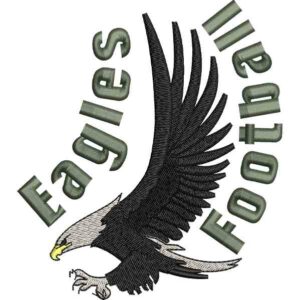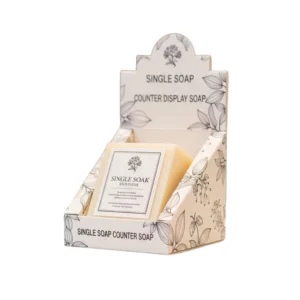
Zdigitizing
Embroidery transforms fabrics into works of art, whether for branding, fashion, or personalized gifts. Two primary methods dominate the field: digitization for embroidery, where artwork is converted into digital stitch files (e.g., DST, PES) for machine embroidery, and manual stitching, a traditional hand-embroidery technique reliant on skilled artisans. Each approach has unique strengths and challenges, making them suited to different projects. Professional services like ZDigitizing streamline digitization, delivering optimized files in 2-12 hours for $10-$20 per design, while manual stitching remains a craft rooted in tradition. This comprehensive blog compares digitization for embroidery vs. manual stitching, exploring their processes, benefits, and applications. A concise FAQ section at the end addresses common questions to guide users in choosing the right method.
What is Digitization for Embroidery?
Digitization for embroidery involves converting artwork, logos, or patterns into digital stitch files that instruct embroidery machines (e.g., Brother, Tajima) on stitch types (e.g., satin, fill), density, and color sequences. The process uses software like Wilcom or professional services to ensure precision, tailored to fabrics like cotton or denim. Digitized files enable automated, consistent stitching, ideal for high-volume or professional projects. Services like ZDigitizing make this accessible, requiring only artwork and specifications from users.
What is Manual Stitching?
Manual stitching, or hand embroidery, is the traditional art of creating designs on fabric using a needle, thread, and techniques like chain stitch, running stitch, or satin stitch. It relies on the artisan’s skill, often using tools like hoops or frames, and is valued for its authenticity and customization. Manual stitching is time-intensive but allows for unique, intricate designs that reflect cultural or personal significance.
Digitization vs. Manual Stitching: A Detailed Comparison
Here’s a breakdown of how digitization for embroidery and manual stitching compare across key factors:
1. Precision and Consistency
-
Digitization:
-
Strengths: Offers machine-precision with AI-optimized stitch placement, density, and color mapping, ensuring identical designs across multiple items. Files are tailored for fabrics and machines, preventing issues like puckering or gaps.
-
Challenges: Requires high-quality artwork and correct specifications to avoid errors like misalignment.
-
Example: A logo stitched identically on 100 T-shirts with no variation.
-
-
Manual Stitching:
-
Strengths: Provides a handmade, artisanal look with slight variations that add character. Skilled artisans can adjust stitches on the fly for unique effects.
-
Challenges: Inconsistent results due to human error; not ideal for large-scale uniformity.
-
Example: A one-of-a-kind floral pattern on a single dress with subtle variations.
-
Verdict: Digitization excels for consistent, high-volume production; manual stitching shines for unique, artisanal designs.
2. Speed and Efficiency
-
Digitization:
-
Strengths: Fast, with professional services delivering files in 2-12 hours and machines stitching designs in minutes. Ideal for bulk orders or tight deadlines.
-
Challenges: Initial digitization takes time (though faster with professionals) and requires setup for each project.
-
Example: 50 logoed caps completed in a day for an event.
-
-
Manual Stitching:
-
Strengths: Allows for immediate creative adjustments without digital setup, ideal for small, custom pieces.
-
Challenges: Extremely time-consuming; a single design can take hours or days, depending on complexity.
-
Example: A monogram on a single handkerchief taking several hours.
-
Verdict: Digitization is far faster for production; manual stitching suits low-volume, bespoke work.
3. Cost
-
Digitization:
-
Strengths: Affordable with professional services ($10-$20 per design, bulk discounts for 5+ designs). Eliminates software costs ($1,000-$5,000) and training.
-
Challenges: Per-design fees add up for one-off projects compared to manual stitching’s low material cost.
-
Example: $15 for a digitized logo file used across 100 jackets.
-
-
Manual Stitching:
-
Strengths: Low material costs (needle, thread, hoop), ideal for hobbyists or artisans with existing skills.
-
Challenges: High labor costs for skilled artisans or time-intensive for beginners, making it expensive for bulk work.
-
Example: $50-$100 in labor for a single intricate hand-stitched design.
-
Verdict: Digitization is cost-effective for scale; manual stitching is cheaper for small, personal projects but costly for labor.
4. Scalability
-
Digitization:
-
Strengths: Easily scales for large runs (e.g., 1,000 uniforms) with reusable digital files, maintaining quality across items.
-
Challenges: Less practical for one-off designs due to digitization costs.
-
Example: Producing identical logos for an entire corporate team.
-
-
Manual Stitching:
-
Strengths: Ideal for unique, one-off pieces or small batches where individuality is valued.
-
Challenges: Impractical for large-scale production due to time and labor constraints.
-
Example: A single custom-embroidered wedding veil.
-
Verdict: Digitization is best for scalability; manual stitching suits small, bespoke projects.
5. Creativity and Customization
-
Digitization:
-
Strengths: Supports specialty techniques like 3D puff, appliqué, or sequins, with AI enabling photo-to-embroidery or intricate patterns. Digital previews allow revisions for precision.
-
Challenges: Limited by artwork quality and embroidery’s inability to handle gradients or very fine details.
-
Example: A 3D puff logo on a cap with vibrant, machine-stitched colors.
-
-
Manual Stitching:
-
Strengths: Offers unmatched creative freedom, allowing artisans to experiment with textures, threads, or cultural techniques (e.g., cross-stitch, beadwork).
-
Challenges: Limited by the embroiderer’s skill and time, with less precision for complex logos.
-
Example: A hand-stitched floral motif with unique bead accents.
-
Verdict: Manual stitching excels for artistic, bespoke designs; digitization offers versatility for modern techniques.
6. Durability
-
Digitization:
-
Strengths: Optimized files with proper underlay and density ensure durable, wash-resistant designs, ideal for uniforms or merchandise.
-
Challenges: Requires testing to avoid issues like puckering on stretchy fabrics.
-
Example: A logo on a jacket that withstands repeated washing.
-
-
Manual Stitching:
-
Strengths: High-quality handwork can be durable if done by skilled artisans using strong threads.
-
Challenges: Inconsistent tension or stitch quality may lead to fraying or uneven wear.
-
Example: A hand-stitched monogram that may loosen over time if not secured properly.
-
Verdict: Digitization ensures consistent durability; manual stitching depends on skill.
7. Sustainability
-
Digitization:
-
Strengths: Optimized stitch paths reduce thread and fabric waste. Digital workflows (uploads, previews) are paperless, and files support eco-friendly fabrics like organic cotton.
-
Challenges: Machine embroidery consumes energy, though minimal.
-
Example: A sustainable T-shirt line with minimal thread waste.
-
-
Manual Stitching:
-
Strengths: Low energy use, relying on manual tools and minimal materials.
-
Challenges: Inefficient stitching by beginners can waste thread or fabric.
-
Example: A small-scale project using eco-friendly threads but requiring more time.
-
Verdict: Digitization is more sustainable for large projects; manual stitching suits eco-conscious small-scale work.
The Digitization Process for Beginners
For those choosing digitization, here’s how to get started with a professional service like ZDigitizing:
-
Prepare Artwork (2-5 minutes): Use high-resolution (300 DPI) JPG, PNG, or AI files with bold, simple designs (3-5 colors).
-
Choose a Service (5 minutes): Select a provider with reviews, 24/7 support, and expertise in your machine’s format (e.g., DST, PES).
-
Upload Artwork (2-5 minutes): Submit via a secure portal, noting the design’s purpose (e.g., logo for T-shirts).
-
Specify Requirements (3-5 minutes): Detail size, placement, fabric (e.g., cotton), and file format.
-
Review Digital Preview (5-10 minutes): Check stitch patterns and colors, using unlimited revisions.
-
Download File (1-2 minutes): Receive the file in 2-12 hours via a secure link.
-
Test and Stitch (10-20 minutes): Test on scrap fabric with appropriate stabilizers, then embroider.
Total User Time: ~10-20 minutes, with the provider handling technical tasks.
Applications of Each Method
-
Digitization for Embroidery:
-
Corporate branding: Logos on uniforms or caps for businesses.
-
Promotional products: T-shirts or bags for events.
-
Fashion collections: Patterns on boutique apparel.
-
Sports merchandise: Team logos on jerseys.
-
-
Manual Stitching:
-
Artisanal crafts: Unique designs for Etsy or local markets.
-
Cultural embroidery: Traditional patterns for heritage pieces.
-
Personalized gifts: Hand-stitched monograms on special items.
-
Small-scale fashion: Custom details on dresses or accessories.
-
Technologies Supporting Digitization
Digitization benefits from modern tools, unlike manual stitching:
-
AI Optimization: Automates stitch mapping and error detection.
-
Cloud Platforms: Enable secure uploads, previews, and delivery.
-
Encryption: SSL/TLS protocols protect designs.
Future Trends in 2025
Digitization is evolving rapidly:
-
Augmented Reality (AR): Preview designs on virtual fabrics.
-
AI Guidance: Suggests stitch settings for beginners.
-
IoT Integration: Syncs with smart machines for real-time adjustments.
Manual stitching will remain traditional but may adopt eco-friendly threads or simplified tools for accessibility.
Conclusion
Digitization for embroidery vs. manual stitching offers distinct choices: digitization excels in precision, speed, scalability, and cost-effectiveness for high-volume projects, while manual stitching provides artisanal charm and creative flexibility for bespoke work. Professional services like ZDigitizing make digitization accessible, delivering files in 2-12 hours for $10-$20 per design, ideal for beginners or businesses. Manual stitching suits unique, small-scale projects but is time-intensive. By understanding your project’s needs—scale, budget, or creativity—you can choose the best method. As AI, AR, and IoT advance, digitization will continue to revolutionize embroidery, while manual stitching preserves its timeless appeal.
FAQs About Digitization vs. Manual Stitching
What’s the main difference between digitization and manual stitching?
Digitization uses digital files for machine embroidery, ensuring precision and speed; manual stitching is hand-crafted, offering unique, artisanal results.
Which is better for beginners?
Digitization with professional services (e.g., ZDigitizing) is easier, requiring no skills; manual stitching needs practice and time.
How much does digitization cost?
Professional services charge $10-$20 per design, with bulk discounts.
Is manual stitching cheaper?
Yes for small projects (low material costs), but labor-intensive for larger ones.
Which is faster?
Digitization is much faster, with files delivered in 2-12 hours and machine stitching in minutes; manual stitching takes hours per design.
What projects suit each method?
Digitization for branding, promotions, or fashion; manual stitching for artisanal crafts or cultural pieces.
Is digitization eco-friendly?
Yes, optimized files and digital workflows minimize waste; manual stitching is low-energy but less efficient.
What technologies support digitization?
AI, cloud platforms, and encryption ensure precision and security.
Can manual stitching achieve the same precision?
No, it’s less consistent due to human variation, but it offers unique charm.
What’s the future of both methods?
Digitization will advance with AR, AI, and IoT; manual stitching will remain artisanal with eco-friendly updates.





